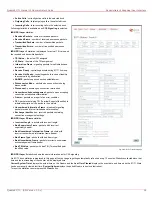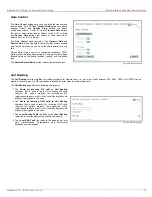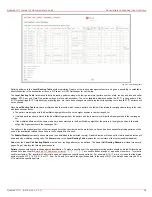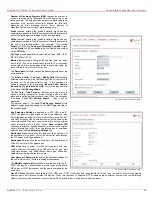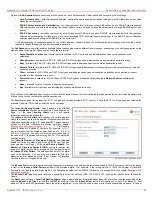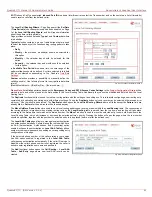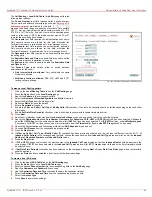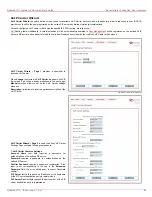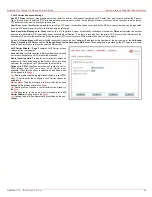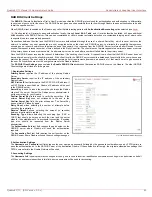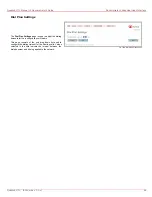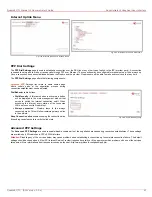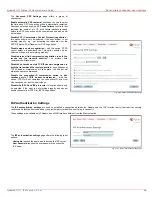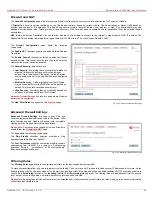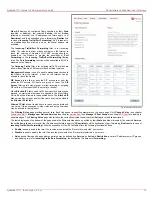
QuadroE1/T1 Manual II: Administrator's Guide
Administrator's Graphical User Interface
QuadroE1/T1; (SW Version 3.0.x)
55
Attention:
When Quadro acts in the Network mode with the Attendant as a destination to route the incoming calls to, digit forwarding should be
disabled on the private PBX side otherwise incoming digits may be mistaken as a special calling codes on the Quadro’s Attendant.
Switch Type is another configuration parameter that depends on the Service Provider when acting in the User mode and the private PBX
capabilities when acting in the Network mode.
Incoming Called Digits Size text field indicates the number of received digits (in a range from 0 to 255) required to establish a call. When field has 0
value, system uses either timeout defined in the T302 field or the Sending Complete Information element messages to establish a call.
Independent on the value in this field, Sending Complete Information element and pound sign always cause the call establishment.
The Generate Progress tone on IP checkbox selection will generate the progress tone to IP (H.323 or SIP).
When Generate Progress Tone to PSTN/PBX checkbox is selected, Quadro generates ring tones to incoming callers during E1/T1 call dialing. This
feature is mainly applicable to 2-stage dialing mode.
Enable CLIR Service checkbox selection enables Calling Line Identification Restriction (CLIR) service which displays the incoming caller ID only in
case if Presentation Indication is allowed on the remote side. Otherwise, if CLIR service is disabled, caller ID will be unconditionally displayed.
The E1/T1 Trunk Status page provides information about the selected trunk state. Following information is displayed on this page:
•
E1/T1 mode - displays which mode is selected: E1 or T1.
•
Interface Type - displays selected interface type: User or Network.
•
Signaling Type - displays selected signaling type: CAS or CCS.
•
Clock Mode - displays the selected clock mode: Master or Slave.
•
Framing mode - displays selected framing mode.
•
Link - displays E1/T1 link state: up or down.
•
Frame Synchronization - displays the signal synchronization state in the trunk: Yes or No.
•
Red Alarm - indicates that the receive frame alignment for the line has been lost and the data cannot be properly extracted. The red alarm is
indicated by the loss of frame condition for the various framing formats.
•
Out of Frame - number of Out of Frame errors.
•
Line Code Violation - number of Line Code Violation errors.
•
Frame Synchronization - number of Frame Synchronization errors.
•
Link Synchronization - number of Link Synchronization errors.
The following statistics are available, if CAS Signaling is selected:
















